Culture

LEE DANIELS’ The Butler, a century-spanning tale of race in the United States and service in the White House, is a dream of a film—by turns historically realistic and magically fable-like. It’s a perfect companion piece to last year’s Django Unchained, in that case a movie whose tastelessness wrapped up as fabulous entertainment forced audiences to engage with a deeper level of the shadow of U.S. history.
Based on the story of Eugene Allen, a black man who served multiple presidents in a White House that took its own time to desegregate its economic policies for domestic staff, The Butler begins with a rape and a murder of plantation workers by the son of the boss. The ethical quality of the film is immediately apparent. This horror is not played for sentiment, nor even spectacle, but to evoke the very ordinariness of monstrosity.
This makes The Butler a rare film: one more interested in confronting us with a kind of previously unspoken truth than in goading us to feel the catharsis of guilt-salving by association. (It’s the antithesis of films such as Mississippi Burning, which use white protagonists to tell black stories and appear to believe that we can somehow participate in the virtue of the civil rights movement just by watching a movie about it.) The makers of The Butler have told a kind of truth about the struggle for “beloved community” that has rarely been seen so clearly on multiplex screens. The film illustrates the serious and painful work of nonviolence and invites us to consider the political and cultural tensions within the black freedom struggle, while giving a more humane perspective on the presidency than is often the case. We can hope the door is now open to more reflective cinema about the unfinished business of the black civil rights movement, broken relationships, traumatic memory, and how we tell the story of who we are.

NOVEMBER MARKS the 50th anniversary of the assassination of our 35th president, an event that defined the life of the baby-boomers—a generation that, by sheer force of numbers, still sucks up most of the oxygen in U.S. culture. There are new books, reissued books, documentaries, made-for-TV movies, and a new Hollywood production, Parkland, starring that Everyman of the baby boom, Tom Hanks. But, anniversary hoopla aside, the JFK assassination and its aftermath can also provide us with some very timely lessons about the dangers that come with secret wars and unaccountable power.
Fifty-nine percent of Americans don’t believe the official story that Lee Harvey Oswald alone killed President John F. Kennedy, and this time the majority is right. The available evidence strongly suggests that the president was the victim of a murder plot that involved anti-Castro Cubans, enraged by his failure to back them up during the Bay of Pigs invasion, and their allies in organized crime who had been heavily invested in pre-Castro Havana. That was the conclusion of the House Select Committee on Assassinations in 1978, which also found physical evidence of another shooter at the crime scene.
Of course, the armed anti-Castro forces in Florida were a bought-and-paid-for creation of our CIA, and the CIA was also working with organized crime figures in various plots to assassinate Castro. So it’s no great leap to suspect some complicity in Kennedy’s assassination by CIA employees. Some reasonable people, including peace activist and theologian James W. Douglass in his book JFK and the Unspeakable, have gone further, claiming that the Kennedy assassination was the result of a policy decision, taken at the very highest levels of the national security state, aimed at heading off JFK’s plans to pull out of Vietnam and end the Cold War. This theory relies heavily on National Security Action Memorandum 263, which laid out plans to begin withdrawing troops from Vietnam, and journalist Norman Cousins’ account of back channel diplomacy in the book, The Improbable Triumvirate: John F. Kennedy, Pope John, Nikita Khrushchev.
Cleats and Dignity
The civil rights struggle for African Americans happened in every sphere of life. Breaking the Line: The Season in Black College Football That Transformed the Sport and Changed the Course of Civil Rights, by Samuel G. Freedman, tells of two great black coaches in the tense year of 1967. Simon & Schuster
Catching Fire
One project of the USC Center for Religion and Civic Culture is the Pentecostal and Charismatic Research Initiative, which funded research in more than 20 countries. PCRI resources include the informative recent report, “Moved by the Spirit: Pentecostal and Charismatic Christianity in the Global South.” crcc.usc.edu/pcri

EVERY SUMMER brings the end of the world. But not since 1998’s Deep Impact and Armageddon both threatened the end of the world with objects from space has there been such apocalypse redundancy in summer blockbusters: This year, class wars, real wars, ecological exhaustion, aliens, and zombie viruses destroyed our planet in as many different ways.
In her excellent e-book The Zombies are Coming!, Kelly J. Baker reminds us that apocalyptic fantasies have been part of the popular American imagination since at least the Puritan hellfire sermon. Even without a common religious narrative to guide them, end-of-the-world stories mostly function as a form of cultural critique and utopian longing. We can only imagine a desired future out of the ashes of the utterly destroyed present. In other words, things are going to have to get a lot worse before they get better.
If Baker is right that we seize on apocalyptic fantasies both to express a deep feeling that something is very wrong with our current state of affairs and to imagine some better alternative, then this summer’s world-ending movies display a profound lack of imagination. Most of them are not even particularly good at conceiving the end of the world, and none of them offer us a vision of how things might be different.
After Earth, for example, is more an overblown coming-of-age story than an apocalyptic thriller. The film follows Kitai (Jaden Smith) as he is guided via walkie-talkie by his wounded father (Will Smith) across an unknown planet. The planet turns out to be Earth 1,000 years after humans have high-tailed it to outer space. But since we never learn why humans had to leave, the apocalyptic frame feels like little more than an excuse to raise the stakes of Kitai’s journey and a chance to show off some fantastic technology. Kitai’s array of super-cool gadgets pretty much guarantees the creatures he meets will have to be more menacing than anything the old Earth could manufacture. The few glimpses we get of humanity’s new planet suggest a post-racial melting pot where everyone speaks a little Chinese and a lot of English and has a preference for flowing linen garments and nautical decoration schemes. I suppose this is a vision of a better tomorrow, but it felt more like a futuristic Pier One ad.

Seattle-based folk group The Head and the Heart released their newest single, "Another Story," off of their anticipated upcoming album, Let's Be Still. The song beautifully wrestles with the grief and confusion that struck the country during the chaos that followed the Newtown, Conn., shootings at Sandy Hook Elementary School.
Check it out below:
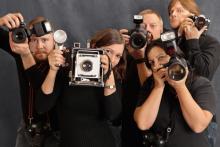
Some people follow pop-star celebrities. I follow spiritual writers.
Rather than tracking news about Lady Gaga or Beyonce, I’m a fangirl of writers like Anne Lamott, Nora Gallagher, Kathleen Norris, and Barbara Brown Taylor.
The obsession is borderline embarrassing. Just last month, I announced at a party that writer Nora Gallagher, author of Moonlight Sonata at the Mayo Clinic, friended me on Facebook. (In truth, I was bragging about an imaginary friend.)
After Nora accepted my friend request, I was bold enough to send her the link to an op-ed I had written about making my teenager go to church. Within 48 hours, Nora wrote back that she liked the title of my piece. So I was convinced she would like me too.
My love of spiritual memoirs has reached the point that my book club, The Literary Ladies, issues a collective groan when it’s my turn to suggest book titles. Many believe that memoirs about faith are slightly self-indulgent. In contrast, I view such writing as the deepest expression of sacred meaning in the chaos of our daily lives.

We live in a church context where so many embrace unbiblical either/or understandings of Christianity: Either evangelism or social action, either inward journey or outward journey. And on and on.
It is the widespread onesidedness that makes Rich Nathan’s new book so exciting.

Every so often a fiction book makes a splash in the swamp of Christian literature, which is predominately ruled by non-fiction reads. The Shack by Wm. Paul Young would be one modern example and, reaching back just a bit more, In His Steps by Charles M. Sheldon would be another.
It's happened again.
Frank Schaeffer's And God Said, “Billy!” is a work of Christian fiction that just barely fits into the “Christian” sub-category of fiction. That's not to say it doesn't come with a heavy dose of Christian characters and culture (it does) as much as it is to say, unlike the other must-read fictions of the past that I just mentioned, this book could and should have a much broader appeal. So much so, I almost titled this review, “The Book Everyone Needs to Read ...”.

Maybe you are like me and you need a bit of good news this week, because it’s been a week of bad news. There was the tragic shooting at the Navy Yard, leaving 12 people killed. Then there were the racist comments about the new Miss America, Nina Davuluri. She is the first person of Indian descent to be crowned Miss America, yet the news of the event emphasized racist tweets. It was almost as if people were competing over who could be the most racist: Some referred to her as “the Arab,” and other tweets claimed, “this is America, not India,” and one even called her “Miss 7-11.” Not to mention the continuing escalation of tensions throughout the world involving Syria.
It was a depressing beginning to the week. I mimetically absorbed much of this violence, hatred, and racism. Misanthropy settled into my soul and I began to loathe myself and the entire freakin’ human race.
But then I saw this video of Beyoncé performing in Brazil, and my hope in humanity was restored.

Before its Aug. 20 launch, officials at Al-Jazeera America emphasized that, despite its Middle Eastern roots and ownership, the fledgling cable news network would be aimed squarely at a U.S. audience.
Guess they weren’t kidding.
A new study of cable news coverage of the Syria crisis released found that the new kid on the block covered the fast-moving story of President Obama’s threat to strike the civil war-torn nation much the way its cable rivals did.
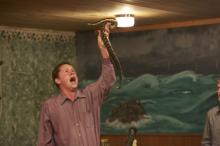
If there were such a thing as “spiritual hazard pay” for columnists, I would be filing a claim after watching the first two episodes of the new series “Snake Salvation,” which debuts Tuesday, Sept. 10, on the National Geographic Channel.
God, I hate snakes. I find them utterly repellent; always have. When I was a toddler, my parents had to carry me out of the snake house at the zoo so I would stop screaming as if someone were trying to kill me.
Were it not for professional obligation — you’re welcome, by the way — you would sooner have found me shaving my head with a straight razor than watching a couple of hours of television dedicated to snake handling and its (alleged) spiritual import.

One of my favorite stories is about the interview I wanted most, but didn’t get.
It was 2005 and I had just signed a contract to write what would be my first book — a collection of profiles of mostly well-known people about their spiritual lives. Artists. Writers. Thinkers. Scientists. The odd rock star.
Sitting in my publisher’s office, she asked me to dream out loud: If I could interview anyone for the project, who was No. 1 on my wish list?
I answered without hesitation: Seamus Heaney.
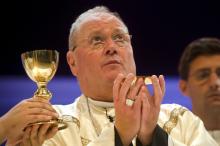
Cardinal Timothy Dolan, archbishop of New York, president of the U.S. Conference of Catholic Bishops, and the most famous funny man in the American hierarchy, went on The Colbert Report Tuesday night to trade quips with another funny guy — and another well-known Catholic — host Stephen Colbert.
Indeed, as Colbert — inhabiting his onscreen persona as a blowhard rightwing pundit — said in welcoming Dolan: “You’re the second most famous Catholic in America – after myself.”
But it was actually Dolan who got the first gag, and giggles, as he walked onto the set and ostentatiously bowed and kissed Colbert’s hand as if he were greeting the pope.
“I’ve got to get a nice big ring if you’re going to be kissing my hand!” replied Colbert, who seemed — uncharacteristically — unsure of how to play the exchange.
In fact, while Colbert was in full faux bloviating mode, he seemed to let Dolan set the pace of their chat; Colbert didn’t poke too hard on topics that could have prompted controversy.
Part of the relative deference may stem from the fact that Colbert is a serious Catholic who has taught Sunday school at his New Jersey parish. Or perhaps it was because Colbert knows Dolan personally, having appeared — out of character — at a forum on faith and humor last year at Fordham University. Or maybe Colbert was a bit out of practice: This was his first show after a two-week summer break, part of which he spent in Rome.
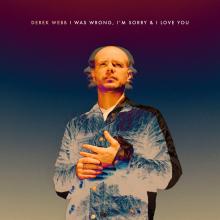
It’s been twenty years since I rose and cleared my throat
It’s been ten years since stood outside the church
- Derek Webb, I Was Wrong, I’m Sorry & I Love You
The first verse of the first song on the Derek Webb’s new album is a recap of his music career, from Caedman’s Call in the 90s to his solo career launched with She Must and Shall Go Free (2003). Since that first solo album, Webb has pushed all sorts of buttons in the church and the “Christian” music world. From albums Stockholm Syndrome (2009) to Sola Mi (2012) and Ctrl (2012), he’s pushed his own musical boundaries and themes, incorporating elements of hip-hop and electronica and veering away from his gospel-country-folk roots.
I Was Wrong, I’m Sorry & I Love You releases today across the country. While you can buy the album online, it is also at a number of Christian retailers for only $4.99 (an unbelievable deal, I must say). It is a return to those gospel-country-folk roots while still embracing all he’s learned in the past 10 years of a solo career. The bright guitar sounds return alongside mellow synthesizers, and for some songs, a crowd-sourced chorus.
But more important than the sounds are the lyrics. They’re not snarky or sarcastic like earlier records Mockingbird and The Ringing Bell, but still raw and personal.

This world is so beautiful
For no reason at all
When life circles around
And you can’t see straight
– from “Can’t See Straight” by Sam Phillips
"Push Any Button,” the first new physical album in five years from singer-songwriter Sam Phillips, is a blithe, fetching exploration of life’s flip side — after the flush of youth, after the heartbreak, after the bottom falls out and the road bends and you head in a wholly unexpected direction that turns out to be exactly where you need to be.
“Push Any Button,” which dropped Aug. 13, looks to the future by examining the past, viewing both through a lens of stubborn (and optimistic) grace.
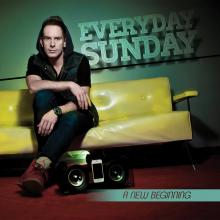
Trey Pearson, front man and creative mind behind the band, Everyday Sunday, is in many ways the picture of a successful Contemporary Christian Music artist. He’s toured the world, played to thousands of fans at a time and sold hundreds of thousands of records. So I was intrigued when I sat down with him at the recent Wild Goose Festival in North Carolina to learn more about why this icon of Christian pop was going solo with his most recent record.
How did you get started in the Contemporary Christian Music (CCM) scene?
I was introduced to the scene as a teenager, finding out that people listened to "Christian music.” I started going to "Christian concerts,” and was inspired to write my own songs and have a band. I was already into performance art as a teenager from doing theater, musicals, acting, and modeling for commercials, print, and things of that nature. I grew up teaching myself piano, and was intrigued by the idea of playing songs for people.
Given my background, I felt like I needed to do "Christian songs" to glorify God with my art. Long story short, after opening for several signed artists, I dropped out of college (after being on honor roll through my freshman year) to make an independent album and pursue a record deal. I went to Nashville, and knocked on doors until someone would listen. I signed a deal three months after I released my independent album.
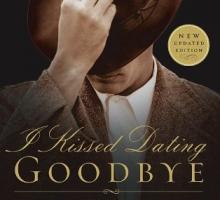
My husband and I basically fell in love via AOL instant message conversations that led to daily email missives and then to phone calls and then, you know, to actually hanging out in person.
We knew each other in ‘real’ life but I was so afraid of saying something stupid in front of him that I basically ignored him, which, as it happens, is not a great way to indicate that you actually really like someone. But IM-ing made me bold.
So, in a way, You’ve Got Mail feels like one of “our” movies since it parallels our story just a little.
“Our” real movie is Ingmar Bergman’s The Seventh Seal, which is a 1957 Swedish movie about a knight returning from the crusades during the Black Death who is engaged throughout the movie in a chess match with Death, so, yeah, basically the opposite of You’ve Got Mail.
We were both at a “movie night” at one of our professor’s homes. I’d known he was going to be there and wrote in my meticulous, OCD handwriting in my journal:
I’m so nervous because Tim Stone is going to be there and I don’t want to find him attractive.
Heaven forbid I find him attractive, right? I had clearly been a little too good at "Kissing Dating Goodbye" (thanks, Josh Harris!) In those days when someone asked me out for coffee I usually responded with horror, like they’d just ask me to help dispose of a body.
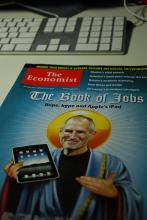
The new movie about Steve Jobs is short on anything explicitly religious. Like its main character, however, it’s got a thread of transcendence running through it.
The truth about Jobs and religion may be that, in this arena as in others, he was ahead of the cutting edge.
The film isn’t making the purists happy, in part because it takes too many liberties with history. But it’s not a documentary. I’ll go against many of the reviews and say that Ashton Kutcher does a pretty good job at representing the personality found in Jobs’ speeches and in what has been written about Jobs — particularly in the massive authorized biography by Walter Isaacson.
One quote in that book, from one of Jobs’ old girlfriends, pretty much captures the character in the film: “He was an enlightened being who was cruel,” she told Isaacson. “That’s a strange combination.”
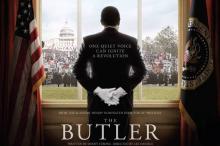
As people stepped on our toes and stood anxiously in front of us, waiting to exit the crowded theater, three of us sat weeping at the close of Lee Daniels’ The Butler. Even now, as I recall that moment, it brings tears to my eyes.
How do I describe the movie? Utterly intense. Remarkable. Heartbreaking. Inspiring. A genius capturing of the complexities of the Civil Rights Movement, of the history of race in America in the 20th and early 21st centuries, of presidential decision making, and of family.
I sat next to my colleague, Lisa Sharon Harper, who sobbed at the violence, tragedy, and passionate courage displayed on screen. It was a challenge. To be a white woman sitting next to an African-American woman as she wept over the suffering of her people — often at the hands of my people. It was neither her nor I who had perpetrated these specific acts, but we are certainly still caught in the tangled web of systemic racism and the histories that our ancestors have wrought us.
Even as we had waited in the theater prior to the movie's start, we spoke of serious subjects. She shared some of her lineage and the challenges of legal records that simply do not exist when ancestors are slaves or perhaps a Cherokee Indian who escaped the Trail of Tears in Kentucky and suddenly appears on the U.S. Census in 1850 as an adult. We spoke of her leadership in the church, and I encouraged her to continue speaking even though she is one of the lone women who graces the stages in front of national audiences. I told her, "You must do this so that other women who come after you can do this. You must do this for women right now. You must do this so that I can do this." We bonded over being women in ministry.
And then the separation came. I do not know Lisa's shoes — the road that she walks due to the color of her skin. I see her in all of her glory — passion, intelligence, creativity — and not in all of her blackness. Our world sees her with racial eyes.
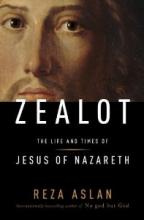
Reza Aslan begins of his book, Zealot: The Life and Times of Jesus of Nazareth, with a prescient warning: “Scholars tend to see the Jesus they want to see. Too often they see themselves—their own reflection—in the image of Jesus they have constructed” (xxxi).
I don’t think Aslan had himself in mind when wrote that statement, but you should be warned: the Jesus in Zealot is Aslan’s own false construction.
His central thesis is that the Jesus of history, and the God Jesus believed in, demanded violence in the face of political and religious oppression. Here’s one of the relevant passages:
[F]or those seeking the simple Jewish peasant and charismatic preacher who lived in Palestine two thousand years ago, there is nothing more important than this one undeniable truth: the same God whom the Bible calls a “man of war”(Exodus 15:3), the God who repeatedly command the wholesale slaughter of every foreign man, woman, and child who occupies the land of the Jews, the “blood spattered God” of Abraham, and Moses, and Jacob, and Joshua (Isaiah 63:3) the God who “shatters the heads of his enemies,” bids his warriors to bathe their feet in their blood and leave their corpses to be eaten by dogs (Psalm 68:21-23)—that is the only God that Jesus knew and the sole God that he worshipped. (122, emphasis in the original.)
The problem that I have with this passage is indicative of the problem that I have with the way Aslan constructs his Jesus. He constantly picks and chooses which verses from the Bible he uses to support his claim that Jesus was a warrior messiah whose goal was to violently overthrow the Roman and religious establishment. He peels away all passages that conflict with his construction so that he can show us what Jesus was truly like.
Well, what Aslan thinks Jesus was truly like.